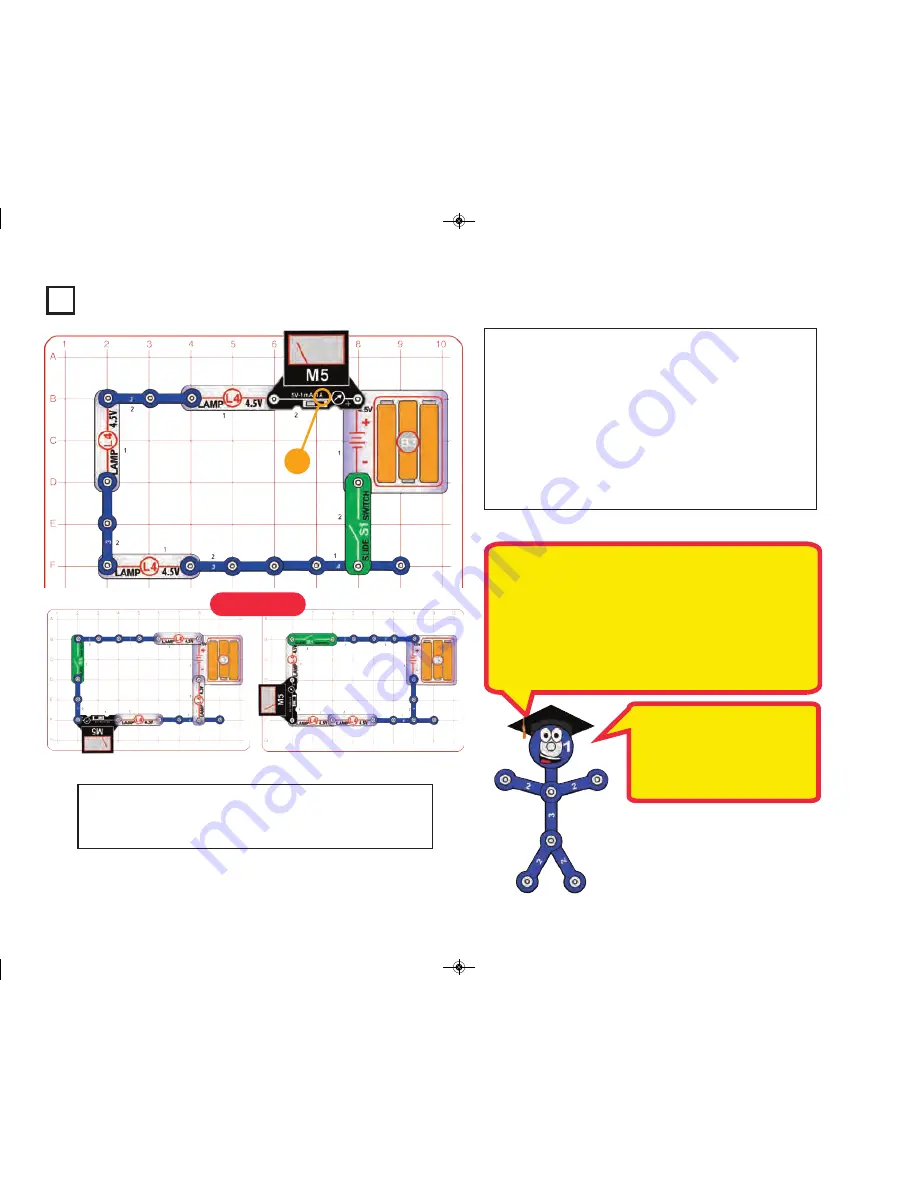
Project 19
Series Swapping
Build the main circuit and set the meter (M5) on the 1A setting.
Turn on the slide switch (S1); the lamps (L4) light dimly and the
meter (M5) measures the current through the circuit.
Now swap the positions of any of the lamps, 3-snap wires, the
slide switch and the meter (the meter should always be placed
so it hangs out of the circuit). Read the current on the meter; does
it read the same for each arrangement?
When you turn on the switch, does the meter measure a higher
current initially than it does after a few seconds? Why?
Note:
Your M5 meter is a simple meter. It may read zero on this
scale even though a small current is flowing.
1A
Examples
In the first moment after you press
the switch, the meter will show a
higher “surge” current. Light bulbs
have less resistance when you
first turn them on, then increase
resistance as they get bright.
The order of parts connected in series or in parallel does not matter -
what matters is how combinations of these sub-circuits are arranged
together.
The choice of whether to use a series or parallel configuration in a cir-
cuit depends on the application, but will usually be obvious. For ex-
ample the overhead lights in the rooms of your home are all connected
in parallel so that you can have lights on in some rooms and off in oth-
ers, but within each room the light and switch are connected in series
so the switch can control the light.
Give some examples of series circuits in your home.
-29-
SC_STEM1_manual_PRINT.qxp_Layout 1 7/13/17 4:42 PM Page 30
















































